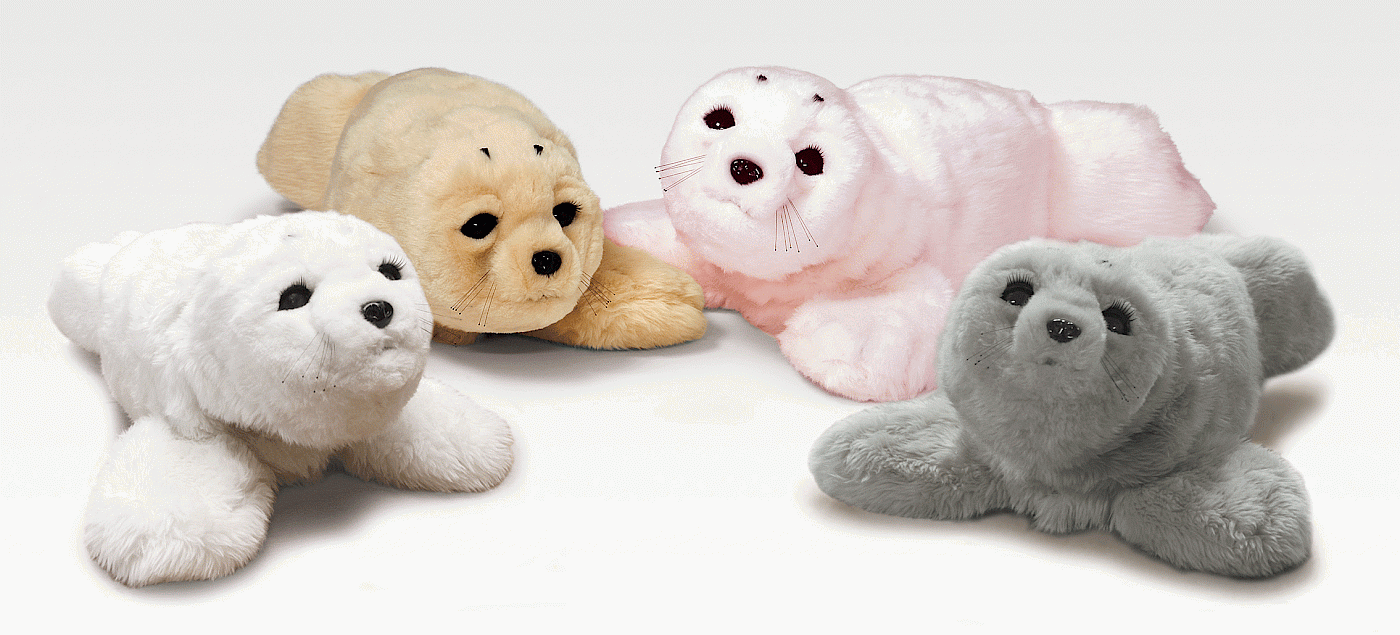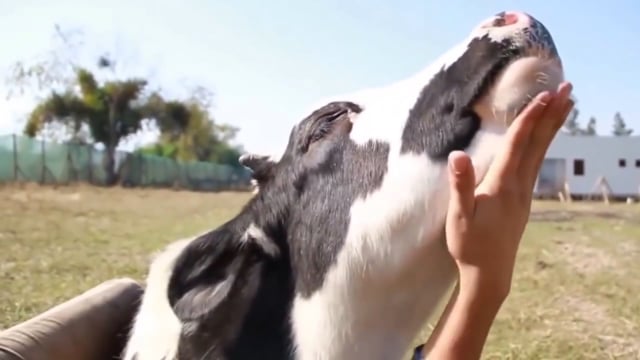The inhabitants of Erewhon cannot care for their grandparents. This would be work, and that is not something they do. So machines take care of the elderly. There are machines to feed them, wash them, move them, as well as machines to make them happy. The latter are of special interest to us. They look like baby seals, covered in thick white fur. And when you put them in your lap and pet them, they emit a delectable snorting. In Erewhon this is enough to make the elderly happy, especially elderly women, it’s always women: all you have to do is view the images.

These baby seals are touching. They have, in both senses of the word, a tactile relation with humans, moving them deeply.
In the history of Erewhon, before the machines took complete control of the city, scientists showed that the elderly suffered less when they sunk their hands in fur, and petted a furry being. Machines were not entirely ready, and so a number of scenarios were considered: asking a nurse with long hair to place his head on the laps of patients so they could pet it; raising baby seals, which would have to be systematically slaughtered after a few months. None of this was very moral. That's why everyone was relieved when the furry robots came on the market. And the elderly are now happy until the end of their days.
](/site/assets/files/1039/paro-tab-1-or-2.1400x933.jpg)
Yet there is undoubtedly something strange about these images. What makes them strange?
A first possibility is that I recognize in the faces of these patients a kind of appeal, a request, which I do not answer, which no human answers. Intuitively, and without necessarily wanting to recognize it, I see something unacceptable in our refusal to answer this request, as well as in the dramatization in beautiful images of our refusal to help these patients.
](/site/assets/files/1039/n-robots-c-20180331.1400x946.jpg)
However, it seems to me that if the patients were petting cats sleeping on their knees, the images would not be as strange. Everyone knows that it can be calming to pet a purring cat. I would find it natural, I think, to see these elderly people take pleasure in this tactile and verbal communication with an animal.
](/site/assets/files/1039/bruce-the-cat-photo-1.1400x933.jpg)
From this standpoint, the strangeness of the images would specifically result from the fact that the patients' request is satisfied by an artifact, a creature that is not alive. It’s as though these humans are being tricked, by being allowed to give to an artifact affection and tenderness intended for a living creature. Yet let us imagine that these patients are petting a cuddly bear, a "teddy" like so many children have. I know that teddy bears are artifacts, but I also know that children up to a certain age play with these objects, and give them a kind of personality. Seeing the elderly play with their teddies, I would say that they are taken back to childhood, or that illness has diminished their cognitive function. I would watch these images with sadness, possibly even dread, but they would not give rise to the sense of the uncanny produced by a robot.
](/site/assets/files/1039/dscn4954.1400x1867.jpg)
In the end, strangeness seems to arise from the ambivalent character of the robot; namely, we hesitate what status to attribute the robot. Or rather, we give it two different statuses, seeing it sometimes or in certain circumstances as a thing, and sometimes or in other circumstances as a being apart from things, which of course has neither human conscience nor animal life, but a kind of personality with which a particular relation is established, an affinity, sympathy, familiarity, or attachment.
If we truly consider the robot to be a kind of animal, or if we imagine a cat in place of the robot, the strangeness of the images disappears. If we truly consider the robot to be a thing, or if we imagine in the place of the robot a teddy bear instead, which for us is a thing, the strangeness of the images once again disappears. Yet precisely we hesitate: we know the robot is a thing, yet at the same time the robot's kindness, its robotic responses to the patient's petting, and the contentment that the patient draws from it commit us to giving it another status. We are unable to decide whether to grant a kind of personality to the robot. And if so, what kind of personality?
](/site/assets/files/1039/20141218_124856.1400x1050.jpg)
Evidently, Erewhonians no longer ask these questions. They have moved beyond these hesitations, and see no ambivalence in robots that plainly have personalities. It is therefore only for us that these images, these women taking pleasure in petting a robot, seem strange or grating. In Erewhon this is all quite banal, and simply touching.
](/site/assets/files/1045/bs-lt-companion-cat-20170402.1400x933.jpg)
Sie ist plüschig, fiept und sie bewegt sich t: Roboter- Robbe soll Demenzkranken helfen, 2011
ifpMuenchen, Roboter Robbe, 2013
Alzheimer’s Australia Vic, PARO: Therapeutic robot baby seal for people with dementia, 2015
PARO therapeutic robot, 2011
Robotik: Robbe Finchen kuschelt durch das Altersheim, 2016
Roboter Robbe, 2013
Al Jazeera English, Robots for the Elderly, 2014
Service robots in nursing homes: Care-O-bot 3 and CASERO, 2011
FraunhoferIPA, ACCOMPANY - Integrated robot technologies for supporting elderly people in their homes, 2014
FraunhoferIPA, Robot Companion for the Elderly, 2013
FZIchannel, Service Robot HoLLiE picks up laundry from the floor, 2013
ikinamo, RIBA II Care Support Robot For Lifting PatientS, 2011
Plastic Pals, RIBA robotic bear nurse, 2009
介護支援ロボットROBEAR(ロベア) 新機能の前抱き上げの紹介, 2015
介護支援ロボットROBEAR(ロベア)の機能紹介動画, 2015
Da Vinci Xi, Intuitive Surgical da Vinci Sp Single Port Robotic Surgical System, 2014
Matt Goldman, Bloomberg Markets and Finance, This Robot May Be the Surgeon of the Future, 2018
 Chapitre 5
Chapitre 5 Chapitre 7
Chapitre 7